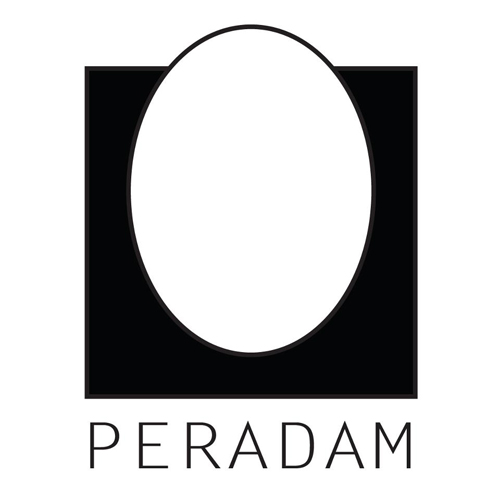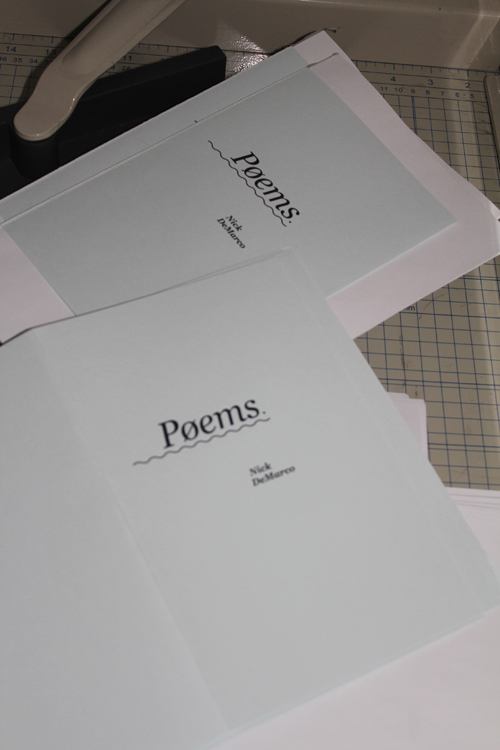 Last week’s New York Art Book Fair at MoMA PS1 affirmed for me how essential collaboration in the arts can be. One of those partnerships in particular stood out. Run by Elizabeth Jaeger and Sam Cate-Gumpert, Peradam is a small New York publishing company that lays a foundation for artists to experiment with material and pursue ideas in new mediums and formats. In the past year, they have published eight books including an artist memoir, Painter’s Journal by Joshua Abelow, a collection of visual poetry by Nick DeMarco, a presentation of notes for Sarah Elliott’s upcoming detective novel, and, most recently, a two-set book by artist David Roesing titled, Terror and the Narrative Tendency (which I will be talking about in my next blog post).
Last week’s New York Art Book Fair at MoMA PS1 affirmed for me how essential collaboration in the arts can be. One of those partnerships in particular stood out. Run by Elizabeth Jaeger and Sam Cate-Gumpert, Peradam is a small New York publishing company that lays a foundation for artists to experiment with material and pursue ideas in new mediums and formats. In the past year, they have published eight books including an artist memoir, Painter’s Journal by Joshua Abelow, a collection of visual poetry by Nick DeMarco, a presentation of notes for Sarah Elliott’s upcoming detective novel, and, most recently, a two-set book by artist David Roesing titled, Terror and the Narrative Tendency (which I will be talking about in my next blog post).
Peradam’s projects go beyond printed pages to include events and series, generating a sort of roster of artists whom they continually work with and follow. The day-to-day operations are a flowing exchange of ideas and developments managed through different forms of communication. The result is a collection of publications executed in a wide range of styles and content, but tied together in a correlating elegant design and clarity of thought that is recognizable in every Peradam project.
I asked Jaeger and Cate-Gumpert to explain how decisions get made, what they look forward to doing next and their future goals for Peradam:
TT: How did you first go about establishing Peradam?
PP: Both of us have long been interested in artist books – I’ve made many of my own, and Sam has always worked in arts publishing. Peradam started as a conversation between Sam and I on how to engage creatively with the people around us, before I even moved to New York. Our interests were similar enough for it to be a cohesive, coherent project, but divergent enough to allow for some creative tension. When I finally moved here, we met, and dove in with a couple of peripherally involved friends. We bought a perfect binder and a commercial paper cutter, figured out ways of printing cheaply, worked out deals with paper suppliers, and started talking with friends and acquaintances we thought might be interested in making books.
TT: Do you ask artists to participate or do they come to you with projects already in mind?
PP: Both. It’s a very fluid process that always starts with a conversation. Some of our artists have projects already started that they never thought of as a book, whereas others come to us with a finished book product in mind. The goal has always been, in either case, to work with the artist closely on all aspects of the book – concept, design, printing considerations – so that the final product is very much a materialization of their ideas. That way, books of poetry or journal entries still function as considered, well-thought-out objects, as artist books, just as much as more traditional forms of that medium, like books of paintings.
TT: How do you decide which projects to do? How do you present different ideas to each other?
PP: We both bring ideas to the table, and certainly approve (or nix) projects together. Presenting ideas to each other happens through a medley of gchats, texting, phone calls, late night convos at parties, and the occasional real meeting bagel date. Once we commit to a project, there is a definite division of roles mediated through this same technology stream. I am usually texting, calling, chatting or setting up Google calendars and shared tasks with Sam all day long, everyday. Whereas I’m better equipped to work directly with artists producing and facilitating their ideas, and often work with the artists during the beginning stages helping with design and conceptual issues, Sam works more closely on the actual production of the book–color correcting, proofing, printing, etc.–and also on the backend, dealing with distribution and financial issues. These processes are fluid and we are constantly asking for each other’s opinion and help. The actual assembly of the books, when we bind and cut, is done together in the same room. Then we bicker over what music to play.
TT: Now that it has been almost a year since its start, is there anything you plan on doing differently with programming and production?
PP: A different and perhaps more discerning approach to picking projects, certainly. We are looking into developing connections across projects, as well, so that we might group together several books into series. We are working on several books that take the aesthetics of government and academic reports as a conceptual starting point, for instance. We’re working on our second artist memoir and would like to do more. Also, we’re working on launches and events in a more systematic way, so that each event matches the tone and subject matter of the project and makes sense within the wider schema of our and our artists’ projects.
Peradam has two new projects in the works: a visual memoir, Window by Alexis Penney and Tony Lowe’s documentation of the West Indian parade, J’ouvert. Their books can be purchased on their website, where you can also find a list of the stockists who carry them.







Pingback: LA Art Book Fair’s press coverage 2013 | fireplace chats